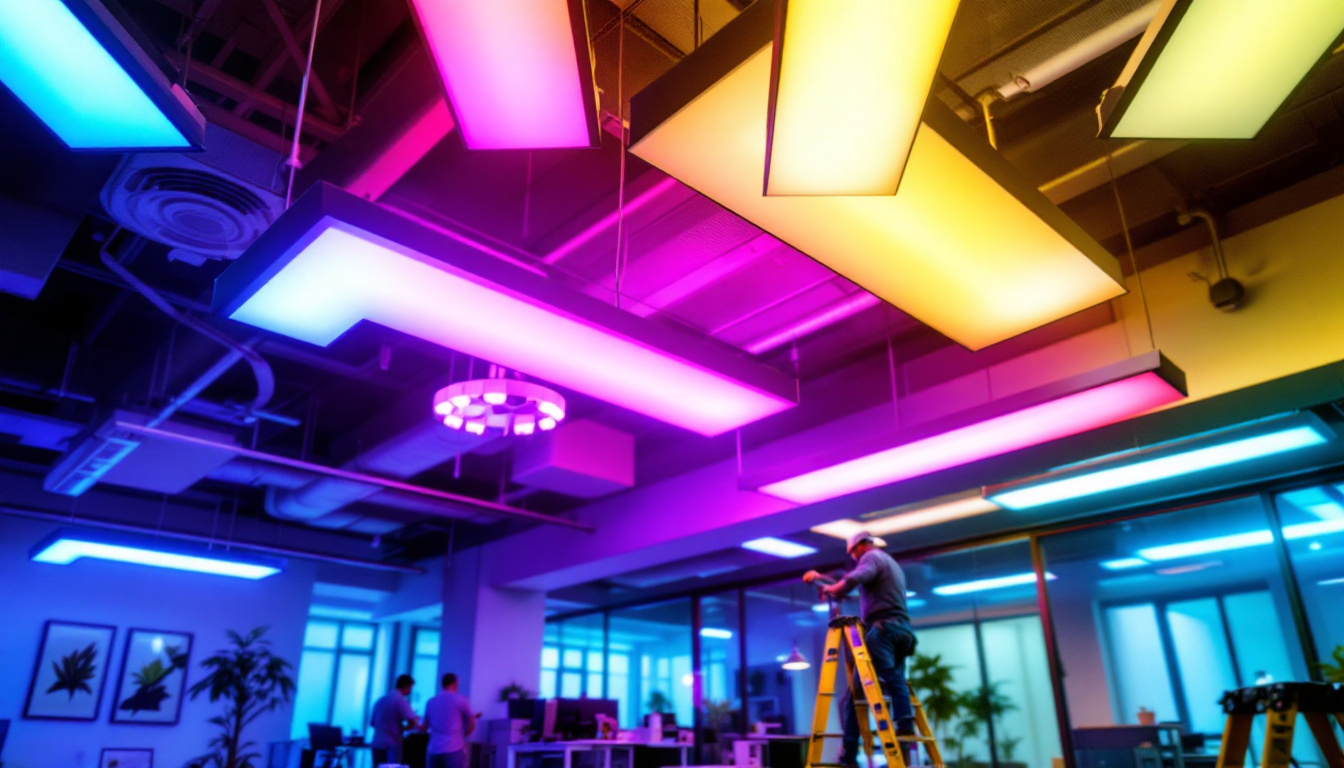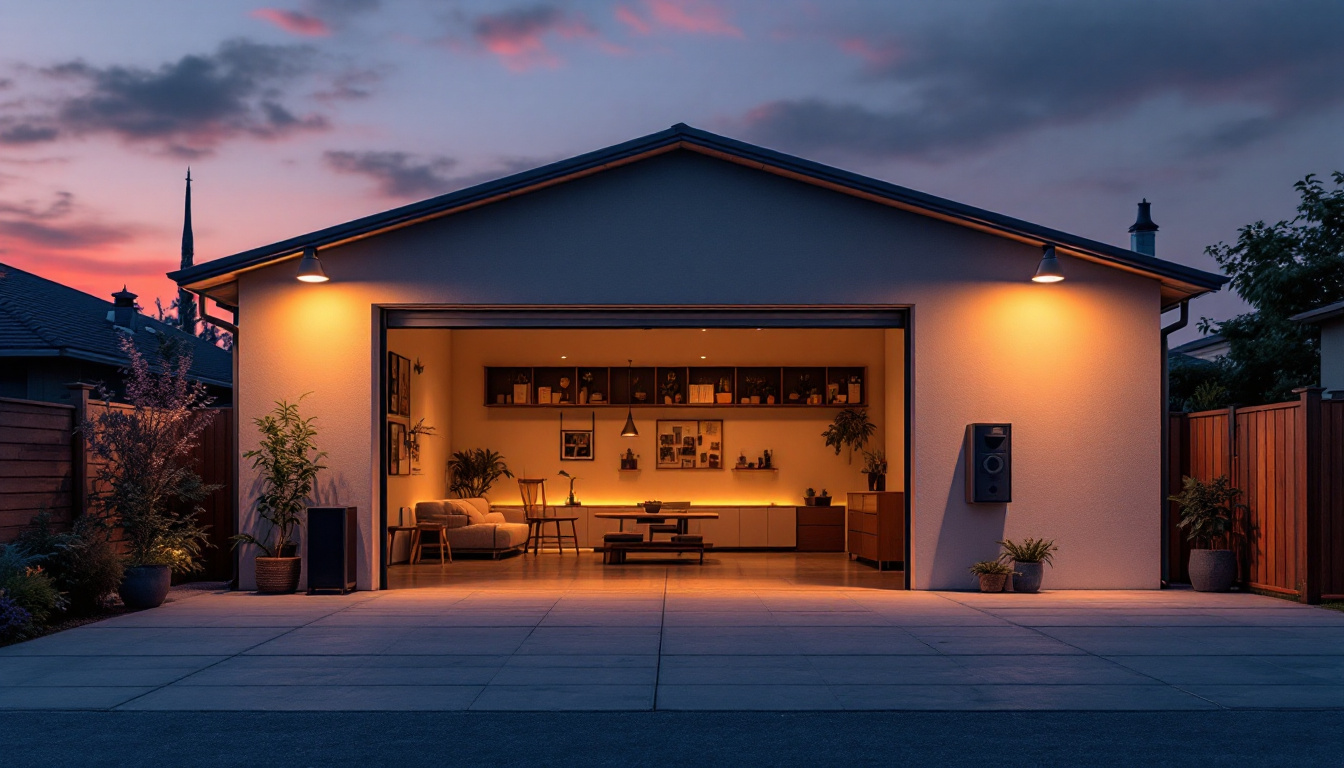

In the realm of lighting solutions, LED workshop lights have emerged as a game-changer for contractors and tradespeople alike. Their efficiency, longevity, and versatility make them an ideal choice for various applications, from industrial settings to home workshops. This article delves into the advantages of LED workshop lights, how to select the right options, and tips for maximizing their potential in any workspace.
LED workshop lights offer numerous benefits that set them apart from traditional lighting options. Understanding these advantages can help contractors make informed decisions when selecting lighting solutions for their projects.
One of the most significant advantages of LED lights is their energy efficiency. Unlike incandescent or fluorescent bulbs, LEDs consume far less energy while providing the same or even greater illumination. This efficiency translates to lower electricity bills, making them a cost-effective choice for long-term use.
Moreover, the reduced energy consumption contributes to a smaller carbon footprint, aligning with the growing demand for environmentally friendly solutions in the construction and lighting industries. In addition to cost savings, many regions offer incentives and rebates for businesses that switch to energy-efficient lighting, further enhancing the financial benefits of adopting LED technology.
LED workshop lights are designed to last significantly longer than traditional lighting options. With a lifespan of up to 50,000 hours or more, they require less frequent replacement, which can save both time and money for contractors. This durability is particularly beneficial in workshop environments where lights may be subject to vibration, shock, or temperature fluctuations.
Additionally, many LED lights are constructed with robust materials that can withstand harsh conditions, making them suitable for various workshop applications, from automotive repair to woodworking. The solid-state technology used in LEDs also means they are less prone to breakage compared to fragile glass bulbs, ensuring that they remain functional even in demanding settings. This resilience not only reduces the hassle of frequent replacements but also enhances safety in the workplace, as there is less risk of broken glass or hazardous materials.
LED workshop lights come in various designs, including portable, fixed, and adjustable options. This versatility allows contractors to choose lighting solutions that best fit their specific needs and workspace configurations. For instance, portable LED lights can be easily moved around the workshop, providing targeted illumination where it’s needed most.
Furthermore, many LED lights offer adjustable brightness levels and color temperatures, allowing users to create the perfect lighting environment for different tasks, enhancing productivity and comfort. The ability to switch between warm and cool light settings can significantly impact the quality of work, especially in detail-oriented tasks such as painting or assembly. Additionally, some LED lights are designed with smart technology, enabling remote control and automation, which can further streamline operations in busy workshops. This adaptability not only caters to the diverse needs of various trades but also promotes a more efficient and enjoyable working atmosphere.
Choosing the right LED workshop light involves considering several factors that align with the specific requirements of the workspace. Here are key considerations to keep in mind.
When selecting LED lights, it’s crucial to consider the brightness level, typically measured in lumens. The higher the lumen output, the brighter the light. For workshop environments, a higher lumen count is often necessary to ensure adequate visibility, especially for detailed tasks like assembly or repair work.
As a general guideline, a workspace may require anywhere from 300 to 800 lumens per square meter, depending on the tasks being performed. Therefore, assessing the specific lighting needs of the workshop can help in selecting the appropriate brightness level. Furthermore, it’s important to note that different areas of the workshop may require varying levels of brightness; for instance, a workbench may need more lumens compared to a storage area. Utilizing adjustable lighting solutions can also provide flexibility, allowing users to modify brightness based on the task at hand.
Color temperature, measured in Kelvin (K), affects the ambiance and functionality of the workspace. Lower Kelvin values (2700K-3000K) produce a warm white light that creates a cozy atmosphere, while higher values (4000K-5000K) emit a cooler, more neutral light that is ideal for tasks requiring precision and focus.
For workshops, a color temperature around 4000K to 5000K is often recommended, as it mimics natural daylight and helps reduce eye strain during prolonged work sessions. Additionally, the color rendering index (CRI) is another important factor to consider; a higher CRI indicates that colors are rendered more accurately under the light. This is particularly beneficial in workshops where color differentiation is crucial, such as in painting or electrical work. A CRI of 90 or above is generally preferred for tasks that demand high color accuracy.
The installation process and mounting options for LED workshop lights can vary significantly. Some lights are designed for easy plug-and-play installation, while others may require more complex wiring or mounting hardware. Understanding the installation requirements is essential for ensuring a smooth setup process.
Additionally, consider the mounting options available, such as ceiling-mounted, wall-mounted, or portable designs. The right mounting solution can enhance the effectiveness of the lighting and ensure that it meets the specific needs of the workshop layout. For instance, adjustable or swivel-mounted lights can provide targeted illumination for intricate tasks, while overhead lights can offer general lighting across the entire workspace. Furthermore, exploring options with built-in motion sensors can enhance energy efficiency by ensuring lights are only on when the workspace is in use, thereby reducing electricity costs without sacrificing visibility.
Once the right LED workshop lights have been selected, it’s essential to leverage their capabilities fully. Here are some strategies to maximize the effectiveness of LED lighting in a workshop setting.
In many workshops, general ambient lighting may not be sufficient for detailed tasks. Incorporating task lighting alongside LED workshop lights can enhance visibility and precision. Task lights can be positioned directly over workstations or areas where intricate work is performed, providing focused illumination where it is needed most.
Adjustable task lights can also be beneficial, allowing users to direct light precisely where it is needed, further improving efficiency and reducing the risk of errors.
With advancements in technology, smart lighting solutions have become increasingly popular in workshop environments. Smart LED lights can be controlled via mobile apps or voice commands, allowing for easy adjustments to brightness and color temperature without the need to physically interact with the light fixtures.
Integrating smart lighting can also enable scheduling and automation, ensuring that the workshop is always adequately lit when in use, while conserving energy when not in operation.
While LED lights are known for their longevity, regular maintenance can help ensure they continue to perform at their best. Dust and debris can accumulate on fixtures, reducing light output and efficiency. Periodic cleaning of the lights and surrounding areas can help maintain optimal performance.
Additionally, checking for any loose connections or signs of wear can prevent potential issues before they arise, ensuring that the workshop remains well-lit and functional.
Examining real-world examples of successful LED workshop light implementations can provide valuable insights into their effectiveness and versatility. Here are a few notable case studies that highlight the benefits of LED lighting solutions in workshop settings.
In an automotive repair shop, the owner decided to replace traditional fluorescent lighting with LED workshop lights to enhance visibility and reduce energy costs. After conducting a thorough assessment of the space, they installed a combination of overhead LED fixtures and adjustable task lights at each work station.
The result was a significant reduction in energy consumption and improved visibility for technicians, leading to increased productivity and a safer working environment. The shop reported a 30% decrease in energy bills, demonstrating the financial benefits of switching to LED lighting.
A woodworking studio faced challenges with inadequate lighting, making it difficult for artisans to work on intricate projects. The studio owner opted for LED workshop lights with adjustable brightness and color temperature settings, allowing for customization based on the time of day and specific tasks.
The improved lighting conditions not only enhanced the quality of the work produced but also contributed to a more enjoyable working atmosphere. Artisans reported feeling less eye strain and fatigue, ultimately leading to higher job satisfaction and creativity.
In a large manufacturing facility, the management team sought to improve overall lighting quality while reducing operational costs. They replaced outdated lighting systems with energy-efficient LED fixtures, strategically placing them to ensure even illumination across the production floor.
The transition resulted in improved worker morale, as employees felt more energized and focused in the well-lit environment. Additionally, the facility experienced a notable decrease in maintenance costs due to the long lifespan of the LED lights.
LED workshop lights represent a significant advancement in lighting technology, offering numerous benefits that can enhance productivity, safety, and energy efficiency in various workshop environments. By understanding the advantages of LED lighting, selecting the right fixtures, and implementing effective strategies for their use, contractors can create optimal working conditions that meet the demands of modern projects.
As the lighting industry continues to evolve, embracing LED technology will not only provide immediate advantages but also position contractors for future success in an increasingly competitive market. Investing in LED workshop lights is not just a choice; it is a commitment to quality, efficiency, and sustainability in the world of lighting solutions.
Ready to elevate your workspace with the cutting-edge LED workshop lights? At LumenWholesale, we offer an exceptional range of spec-grade lighting products designed to meet the needs of any project. Our commitment to quality and affordability ensures that you get the best value without the middleman markups. Plus, with free shipping on bulk orders, you can stock up on high-performance lighting solutions that enhance productivity and safety in your workshop. Don’t compromise on quality or price. Discover wholesale lighting at the best value today and light up your workspace with confidence.

Discover how light diffusers for fluorescent lights can transform spaces and elevate your lighting contracting business.

Discover the pitfalls lighting contractors often face with high bay lighting installations.

Discover the frequent pitfalls lighting contractors encounter when installing garage lights outside.

Discover the essential insights lighting contractors need about UV disinfecting lights and air purifier fixtures.
Get notified when NEW deals are released.
Optimize your budget with wholesale discounts.
Only top-quality, specification-grade lighting products.
No additional costs at checkout - what you see is what you pay.
We understand the unique needs of contractors.